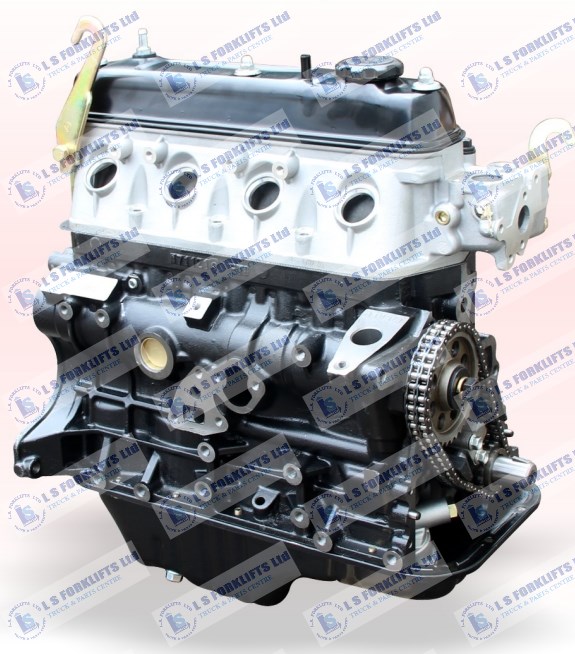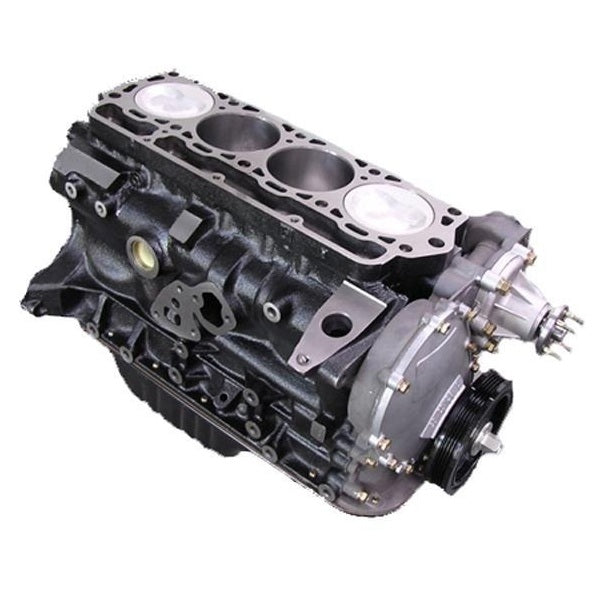How the 4Y Engine Compares to Other Engines in Terms of Fuel Efficiency
How the 4Y Engine Compares to Other Engines in Terms of Fuel Efficiency
Blog Article
Why the Engine Is the Finest Choice for Performance and Effectiveness in Your Cars And Truck
The engine remains a critical element in automotive style, mostly due to its significant impact on both performance and performance. As innovations in technology make it possible for smaller sized engines to deliver amazing power while optimizing fuel economy, the assimilation of functions such as turbocharging and crossbreed systems comes to be increasingly vital.
Comprehending Engine Kind
Recognizing the numerous sorts of engines is important for maximizing efficiency and efficiency in auto design. The primary engine kinds consist of internal burning engines (ICE), electric engines, and crossbreed systems, each offering unique advantages and constraints.
Interior burning engines, which can be more classified into gasoline and diesel variants, count on the burning of fuel to generate power. Gas engines commonly supply greater RPMs and better acceleration, while diesel engines are known for their torque and fuel performance, making them suitable for sturdy applications.
Electric engines, on the various other hand, use electric motors powered by batteries or gas cells. They use rapid torque delivery, causing smooth velocity and reduced exhausts. The efficiency of electrical engines is considerably more than that of ICEs, making them a prominent option for eco-conscious customers.
Hybrid systems combine both internal burning and electrical engines, leveraging the strengths of both modern technologies. They maximize fuel intake by utilizing electric power at lower rates and changing to fuel or diesel for higher rates or larger tons.
Picking the right engine kind is crucial for attaining desired efficiency metrics and ecological sustainability in modern automobile design.
The Influence of Engine Dimension
Engine size regularly plays a crucial duty in identifying an auto's efficiency and performance. Usually measured in liters or cubic centimeters, engine dimension straight influences the power result and torque characteristics of a lorry. Larger engines typically create even more horse power, making it possible for better velocity and higher leading speeds. This is specifically useful in applications needing durable performance, such as cars and sturdy vehicles.
Nonetheless, boosted engine dimension frequently associates with reduced gas performance. Smaller engines can provide appropriate performance for daily driving while promoting far better efficiency, making them a preferred choice in small and mid-size vehicles.
In addition, improvements in engine design, such as turbocharging and straight gas shot, enable smaller sized engines to attain power levels equivalent to their bigger counterparts. This pattern highlights the value of not entirely focusing on engine size but likewise taking into consideration general lorry style and modern technology (4y engine). Ultimately, the influence of engine dimension on efficiency and efficiency highlights the need for customers to assess their specific driving requirements and choices when choosing an automobile
Advanced Engine Technologies
Developments in engine innovations have dramatically reshaped the landscape of auto efficiency and efficiency, structure upon the foundational ideas established by engine size. Especially, advancements such as turbocharging and straight gas shot have actually allowed smaller sized engines to supply power levels previously connected with larger equivalents. Turbochargers compress air getting in the engine, enabling for enhanced power result without a corresponding rise in engine size, while straight shot enhances fuel shipment, boosting burning efficiency.
Furthermore, variable shutoff timing systems have become an essential modern technology, allowing engines to adjust valve operation based on driving problems. This flexibility boosts both performance during acceleration and fuel effectiveness during cruising. Hybrid and electrical engine innovations further show the change in auto design, integrating standard inner burning engines with electrical motors to optimize effectiveness while minimizing exhausts.
In addition, improvements in products go to this website science have led to lighter, a lot more long lasting engine parts, even more enhancing performance and durability. The assimilation of advanced electronic devices and engine control units also permits real-time adjustments, ensuring ideal performance across various conditions. Jointly, these advanced engine modern technologies not only improve automobile performance yet additionally add to an extra lasting auto future, showing the recurring advancement of engine design.
Harmonizing Power and Efficiency
Striking a balance in between power and efficiency is crucial in modern-day automotive style as suppliers seek to fulfill increasingly rigid emissions laws while satisfying consumer demand for performance (4y engine). The difficulty hinges on optimizing engine qualities to supply robust power output without sacrificing gas economic climate
To achieve this balance, engineers utilize various techniques, such as turbocharging, which boosts engine power by forcing in more air, permitting a smaller sized engine variation that boosts fuel efficiency. Variable shutoff dig this timing technologies additionally play a significant function, allowing engines to adjust their performance attributes based on driving conditions, consequently enhancing both power and performance.
Moreover, developments in products and manufacturing methods have brought about lighter engine components, which lower total lorry weight and boost gas performance without compromising power. Hybrid innovations have additionally become a feasible service, combining conventional inner burning engines with electrical powertrains to offer an increase in performance while preserving lower emissions.

Future Trends in Engine Design

Additionally, the growth navigate to this site of advanced products, such as high-strength alloys and lightweight composites, is set to change engine components. These materials not just reduce weight but likewise improve thermal performance, therefore optimizing performance. In addition, suppliers are checking out variable compression proportions, allowing engines to adjust to different driving conditions, boosting both power outcome and fuel economic situation.
Even more, the rise of expert system and artificial intelligence in engine style is making it possible for anticipating upkeep and real-time performance optimization. This technology can result in engines that self-adjust for maximum performance based on driving patterns.

Conclusion
In conclusion, the engine offers as a crucial element in attaining ideal efficiency and effectiveness in contemporary lorries. The interaction between engine size and layout proceeds to advance, driving developments that balance exciting performance with environmental sustainability.
Additionally, improvements in engine layout, such as turbocharging and direct fuel injection, allow smaller sized engines to attain power degrees equivalent to their bigger equivalents.Advancements in engine modern technologies have actually significantly improved the landscape of automotive efficiency and efficiency, building upon the fundamental principles developed by engine size. Turbochargers compress air entering the engine, permitting for boosted power output without an equivalent boost in engine dimension, while direct shot maximizes gas distribution, improving combustion effectiveness.
Hybrid and electric engine innovations additionally show the shift in vehicle design, incorporating conventional interior combustion engines with electric motors to maximize efficiency while lowering discharges.
Collectively, these innovative engine technologies not just boost vehicle efficiency but also add to an extra lasting automotive future, demonstrating the ongoing evolution of engine design. (4y engine)
Report this page